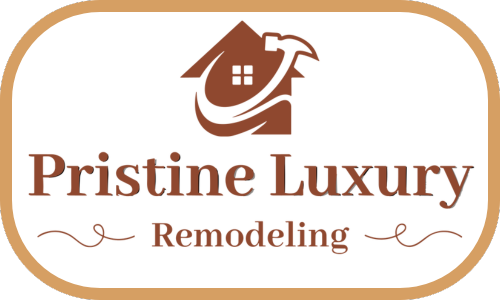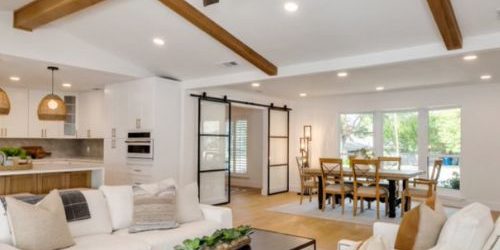As the seasons change and temperatures fluctuate, ensuring proper insulation in your home becomes crucial. Not only does effective insulation keep you comfortable, but it also significantly impacts your energy bills. In this blog post, we’ll explore the importance of insulation, discuss various types, and provide practical tips for maximizing energy efficiency.
Upgrading your home’s insulation can lead to substantial savings on your heating and cooling costs while benefiting the environment. Let’s delve deeper into the details.
Understanding Home Insulation
What Is Home Insulation
Home insulation is designed to minimize the transfer of heat into or out of your living space, enhancing energy efficiency and indoor comfort. Various materials are used for insulation, including fiberglass, which is widely used due to its affordability and ease of installation; polystyrene, known for its high thermal resistance and moisture-resistant properties; and mineral wool, valued for its fire-resistant characteristics and soundproofing abilities. The effectiveness of insulation is measured by its R-value, with higher R-values indicating better resistance to heat transfer. Selecting the right insulation material and R-value depends on factors such as your climate, budget, and specific insulation needs. Proper insulation not only helps maintain a comfortable indoor temperature year-round but also reduces energy bills and environmental impact by decreasing the need for heating and cooling.
Signs You Need New Insulation
To improve home insulation, begin by evaluating existing insulation check the type, thickness, and R-value to determine its effectiveness. Homes built before 1960 often lack adequate insulation. Look for physical signs of poor insulation, such as noticeable temperature variations between rooms, unusually high energy bills, and icicles hanging from the roof, which can indicate an inadequately insulated attic. Additionally, address drafts by sealing air leaks around windows, doors, and vents, as these gaps can significantly reduce the efficiency of your insulation. Regularly assessing and upgrading your home’s insulation can lead to better energy efficiency, reduced utility costs, and improved overall comfort.
Hiring Insulation Contractors
Professional installation provides numerous benefits, including expertise in material selection, precise installation, and adherence to building codes, which enhance insulation performance and longevity. When selecting reputable contractors, verify their credentials, check reviews, and seek references from previous clients, ensuring they are licensed and insured. Obtaining multiple quotes can also help compare pricing and services. Proper installation techniques are crucial for maximizing insulation effectiveness, as professionals ensure even application without gaps or compression and properly seal and weatherstrip to prevent air leaks. Prioritizing these factors helps achieve optimal insulation performance, leading to a more comfortable and energy-efficient home.
Types of Insulation
Batt Insulation
Long rolls of insulation are ideal for covering large areas and are designed to fit standard joist spacing. This type of insulation is particularly suitable for use in attics, where it can be laid out on the floor between joists or attached to the rafters. Utilizing long rolls of insulation in attics helps create a continuous barrier against heat transfer, improving the overall energy efficiency of the home by preventing heat loss in the winter and heat gain in the summer. This method of insulation ensures thorough coverage, which is essential for maintaining a comfortable indoor temperature and reducing energy costs.
Spray-In Foam Insulation
Spray foam insulation is an excellent choice for improving home insulation as it expands to fill gaps, providing comprehensive coverage. It is particularly effective for hard-to-reach areas where traditional insulation materials may not fit or provide adequate sealing. Spray foam not only enhances thermal resistance but also acts as an air barrier, preventing drafts and improving energy efficiency. This type of insulation is ideal for sealing around windows, doors, vents, and other irregular spaces, ensuring that every corner of your home is well-insulated and energy-efficient.
Loose-Fill Insulation
Blown-in insulation consists of loose fibers or pellets, making it highly effective for filling irregular spaces and hard-to-reach areas. This type of insulation can conform to various shapes and cavities, providing excellent coverage and minimizing gaps that can lead to heat loss or gain. Blown-in insulation is ideal for attics, wall cavities, and other areas where traditional insulation rolls or batts may not fit properly. Its ability to fill every nook and cranny helps enhance the overall energy efficiency of your home, maintaining a consistent indoor temperature and reducing energy bills.
DIY Insulation Tips
Attic Insulation
When insulating your home, focus on the attic floor and rafters to maximize energy efficiency. Adding insulation to these areas helps prevent heat loss in the winter and heat gain in the summer, maintaining a comfortable indoor temperature year-round. To ensure optimal performance, add insulation to achieve the recommended R-values for your climate zone, as higher R-values indicate better resistance to heat transfer. Properly insulating the attic floor and rafters not only improves thermal efficiency but also reduces energy bills and enhances overall comfort. Regularly checking and upgrading attic insulation can provide significant long-term benefits for your home’s energy efficiency.
Exterior Walls
In addition to the attic, insulate exterior walls to further prevent heat loss and enhance your home’s energy efficiency. Properly insulated exterior walls help maintain a consistent indoor temperature, reducing the need for heating and cooling. For optimal results, consider professional installation, as experts can ensure thorough coverage and proper sealing, addressing any potential gaps or weaknesses in the insulation. Professional installers have the tools and experience to achieve the best performance from your insulation, ultimately leading to lower energy bills and improved comfort throughout your home.
Sealing Gaps
To improve energy efficiency and comfort, caulk gaps around windows, doors, and vents to seal any leaks that may allow drafts and heat loss. Additionally, weatherstrip doors and windows to create a tighter seal, further preventing air infiltration. These measures help maintain a stable indoor temperature, reduce energy consumption, and enhance overall comfort by minimizing drafts and heat exchange between the interior and exterior of your home. Properly sealing and weatherstripping are essential steps in maximizing the effectiveness of your insulation and ensuring a well-maintained, energy-efficient home.
Insulating Specific Areas
Attic Insulation
Attic insulation is crucial for maintaining energy efficiency and comfort in your home, as it prevents heat loss in the winter and heat gain in the summer. Several types of insulation are suitable for attics, including fiberglass batts, blown-in insulation, and spray foam. Fiberglass batts are cost-effective and easy to install, while blown-in insulation provides excellent coverage for irregular spaces, and spray foam offers superior sealing properties. When deciding between DIY vs. professional installation, consider the complexity of the job and your experience level. DIY installation can be cost-effective for simpler projects, but professional installation ensures optimal results through expert techniques and proper equipment, ultimately leading to better long-term performance and energy savings.
Wall Insulation
Exterior and interior wall insulation are essential for improving a home’s energy efficiency and comfort, with exterior insulation preventing heat loss and gain, and interior insulation providing additional thermal efficiency and soundproofing. Older homes often lack sufficient insulation and may present unique structural challenges, necessitating a thorough assessment before upgrading. Retrofitting options include blown-in insulation for minimal disruption, spray foam for superior sealing, and rigid foam insulation for exterior walls. Professional assessment and installation are recommended to address any structural issues and ensure seamless integration with existing structures, maximizing energy efficiency and comfort.
Basement and Crawl Space Insulation
Preventing moisture and mold is crucial for maintaining a healthy home environment and the integrity of insulation. Properly insulating crawl spaces can significantly reduce moisture problems and enhance overall energy efficiency. This involves using insulation materials suitable for damp conditions, such as closed-cell spray foam, which provides both insulation and moisture resistance. Installing vapor barriers is also essential; these barriers prevent moisture from seeping through walls and floors, thereby protecting insulation and structural elements from mold growth. Vapor barriers should be installed on the warm side of the insulation in colder climates and on the exterior in warmer climates to effectively control moisture and ensure the long-term effectiveness of the insulation.
Answering Common Questions
Q1 How much can insulation save on heating bills?
A1 Improving insulation can save between 10% and 50% on heating costs1.
Q2 What if my house was built before 1960?
A2 Older homes are often under-insulated. Evaluate your existing insulation and consider upgrading.
Q3 Can I install insulation myself?
A3 While some DIY projects are feasible, professional installation ensures optimal results.
The Impact of Proper Insulation
Effective insulation not only reduces energy bills but also contributes to a more sustainable environment. By minimizing heat transfer, you create a comfortable living space while minimizing your carbon footprint.
Seeking Expert Advice
For personalized guidance, consult a qualified home energy auditor. They can assess your entire home and recommend insulation improvements tailored to your specific needs.
Conclusion
In this comprehensive guide, we’ve explored the importance of home insulation and its direct impact on energy efficiency. Upgrading your insulation offers significant benefits, including energy savings through lower energy bills, as proper insulation maintains consistent indoor temperatures, reducing the need for excessive heating or cooling. Insulation also ensures year-round comfort by eliminating drafts, temperature fluctuations, and chilly corners.
Moreover, by minimizing energy consumption, you contribute to a greener planet, as sustainable living begins with well-insulated homes. Key takeaways include choosing the right insulation type—fiberglass, spray foam, or cellulose—based on your needs and budget, ensuring professional installation for optimal results and safety, regularly inspecting and maintaining your insulation, and considering incremental improvements over time to balance efficiency and budget.
Visit us at Pristine Luxury Remodeling
For more information and personalized guidance visit us at Pristine Luxury Remodeling, We specialize in providing exceptional remodeling services that elevate your space into a masterpiece of luxury.







